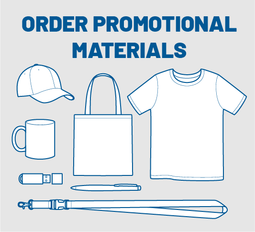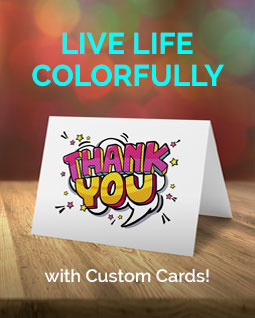More Print Tips
- • Maximum Impact: Is it Best to Send a Postcard or a Letter?
- • Drive Rapid Response to Your Direct Mail: 10 Pro Tips
- • The Usefulness and Utility of Print Marketing
- • Boost Sales with Brochures
- • 5 Opacity Tips You Should Know
- • The Window to Marketing
- • Profitable Postcard Marketing: Finding the Right Frequency
- • 3 Fundamentals for Nailing Your Direct Mail Marketing
- • Picking the Perfect Paper
Blacker than Black: Using "Enriched" Black Ink
When we think of colors, we often think of many different shades of each primary color. Take blue for example...it can vary between colors such as baby blue, aqua, turquoise, teal, royal blue, or navy blue.
 Many people would assume that the one exception to these color variations is black. After all, we think of black as being absolute darkness, and expect it to appear this way when printed on a document as well. However, black that is used in full-color (process) printing is transparent, like all process inks, and cannot cover ink or paper as thoroughly as you may like.
Many people would assume that the one exception to these color variations is black. After all, we think of black as being absolute darkness, and expect it to appear this way when printed on a document as well. However, black that is used in full-color (process) printing is transparent, like all process inks, and cannot cover ink or paper as thoroughly as you may like.
Although using an opaque black ink may seem like a simple solution, it would cause adverse reactions to other color or high-resolution images that contain black ink. Instead, the wise choice would be to add various "enriched" process blacks to your color menus. Their use should vary according to how and where the black is applied.
Here are two types of enriched blacks to consider using:
- Rich black. Rich black combines process black with one other process ink (traditionally 100% black and 60% cyan), which causes the black to appear "blacker" because the second ink color increases its density. Use rich black whenever the edges of a black object are fully exposed, or when a black object straddles other image information. And remember, it's only appropriate for objects that are at least a quarter-inch thick.
- Super black. By combining three process undercolors (50% cyan, 50% magenta, and 50% yellow), you can create the deepest, most satisfying process black you can reproduce on-press. Use super black only when all the object edges are within other colors, or when they bleed off the edge of the page.


Print Publishing: A Hayden Shop Manual
by Donnie O'Quinn
Print publishing is the most complex trade in the digital graphics industry. Every job destined for on-press reproduction involves dozens of products, extensive communication, innumerable techniques, and strict adherence to a long list of file construction guidelines. You don't thrive by mastering a single tool any better than a carpenter builds a house by using only a hammer. Written by a professional with over 10 years of in-the-trenches experience, it tackles the full range of issues required to succeed on the job. Whether you are a designer or output technician, a prepress operator or production specialist, you'll benefit from its clear, no-nonsense approach. The author has been in your shoes. He's learned the hard way. Throughout the book, you'll find explanations of the most frequent user errors, hundreds of clearly labeled figures, and thousands of factors that can make or break your bottom line.



Share this